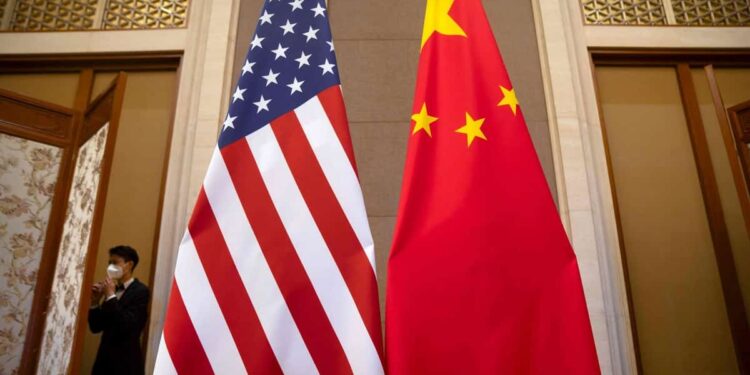Trade balance, technological catch-up, political use of exchange rates or even American debt held in China, Washington’s recriminations towards Beijing are numerous and are one of the rare subjects on which Republicans and Democrats agree.
American debt
Republicans, in particular, most often believe that China holds too much American debt. This could in fact give it leverage on Washington if it threatened to resell its bonds, thereby causing the value of the whole to fall.
The US debt exceeds $34 trillion, but only $8 trillion is held abroad. China is today one of the main countries holding this debt, but it regularly reduced its position in 2023, before increasing slightly at the end of the year.
China now holds $816 billion in US debt, according to the Treasury Department, a little over $1 trillion when Hong Kong is added. It is the second largest foreign holder, behind Japan (1138 billion) and just ahead of the United Kingdom (753 billion).
Technology race
US President Joe Biden has put the pressure on with a clear objective: “ensuring the national security” of the United States.
Semiconductors, artificial intelligence (AI), electric vehicles: Washington wants to stay ahead of Beijing or catch up. And prevent the Chinese army from having the latest technologies.
During the mandate of Donald Trump, the main target was the telecoms group Huawei, the world number one in the sector, which the United States wanted to keep out of its 5G networks and those of its allies.
With Joe Biden, restrictions have increased. “The objective is always to limit the Chinese army’s access to the most advanced semiconductors which could power advances in AI and sophisticated computers,” recalled the American Secretary of Commerce in mid-October, Gina Raimondo.
There remains one important point: the strategic materials necessary for these new technologies and over which Beijing currently has ample control. Here again, Washington’s objective is to circumvent and isolate China.
Trade balance
If China is no longer the United States’ leading trading partner, now overtaken by Mexico, it is the country with which the trade balance remains the most unbalanced, despite numerous efforts to remedy it.
Donald Trump had increased customs duties on Chinese products, in order to put pressure on Beijing and rebalance trade. The trade agreement signed in January 2020 between the two countries allowed for some marginal developments, but the trend remained the same.
Customs duties remained in place under Joe Biden, coupled with a policy of “decoupling” which ultimately became “lowering risk”, in order to depend less on China for supply chains deemed critical.
The effect seems to be starting to be felt, trade from China is growing less quickly than from the rest of the world. But in fact, some Chinese products now simply take an additional step, via Mexico or Vietnam, new strongholds of trade towards the United States.
Currency war?
The question of exchange rates and the use of currency for political and commercial purposes is a recurring subject. For many years, Washington has accused Beijing of maintaining its national currency, the yuan, at a deliberately lower rate against the dollar in order to promote its exports. In early November, the Treasury Department regretted China’s “lack of transparency” in its exchange rate policy.
But the concern now focuses on the internationalization of the yuan. In fact, the Chinese currency still remains little present in commercial exchanges: less than 3.5% of payments via the SWIFT international banking system were made in yuan at the end of 2023, compared to nearly 19% in euros and more than 50% in dollar.
But China wants to see the yuan establish itself, particularly in its trade, in order to avoid possible American sanctions, with Beijing believing that Washington is using the dollar as a weapon. The yuan was used in trade with Brazil, Russia and Argentina.



